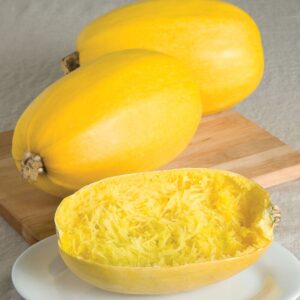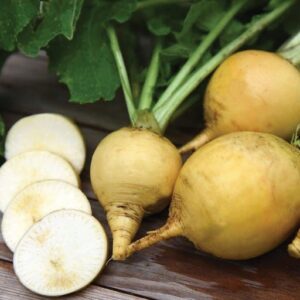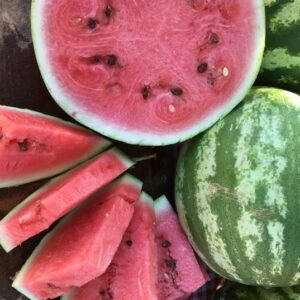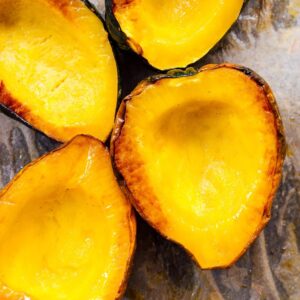Bok Choy variety of Chinese cabbage.
Description of Bok Choy variety of Chinese cabbage.
Bok choy, also known as pak choi or Chinese cabbage, is a popular leafy green vegetable that belongs to the Brassica family. Here’s a description of this variety:
Appearance: Bok choy has dark green, glossy leaves with thick white stalks. The leaves are smooth and oval-shaped, forming a cluster around the base of the plant. Some varieties may have slightly serrated edges on the leaves.
Flavor: It has a mild, slightly sweet flavor with a hint of peppery undertones. Both the leaves and stalks are edible and contribute to the overall flavor profile of the vegetable.
Texture: The leaves of bok choy are tender and crisp, while the stalks are crunchy and succulent. The contrast in texture between the leaves and stalks adds to the appeal of this vegetable.
Culinary Uses: Bok choy is widely used in Asian cuisine, particularly in stir-fries, soups, and steamed dishes. It can also be eaten raw in salads or used as a wrap for fillings. Bok choy is prized for its versatility and ability to absorb flavors from other ingredients.
Nutritional Benefits: Bok choy is low in calories and rich in vitamins and minerals, including vitamins A, C, and K, as well as folate, potassium, and calcium. It’s also high in fiber and antioxidants, making it a nutritious addition to your diet.
Storage: Bok choy can be stored in the refrigerator for up to a week. To extend its shelf life, wrap the bok choy in a damp paper towel and place it in a plastic bag or vegetable crisper drawer.
Overall, bok choy is prized for its mild flavor, crunchy texture, and versatility in cooking, making it a beloved ingredient in many dishes around the world.
Planting instructions for bok Choy variety of Chinese cabbage
To plant bok choy, follow these planting instructions:
- Timing: Bok choy is a cool-season crop, so it’s best to plant it in early spring for a spring harvest or in late summer for a fall harvest. It grows well in cooler temperatures and can tolerate light frosts.
- Location: Choose a location in your garden that receives partial to full sun. Bok choy prefers well-drained soil with good fertility and a pH of around 6.0 to 7.5.
- Soil Preparation: Prepare the soil by loosening it to a depth of about 8-10 inches and incorporating organic matter such as compost or well-rotted manure to improve soil fertility and structure.
- Sowing Seeds: Plant bok choy seeds directly into the garden bed, spacing them about 6-8 inches apart. Plant the seeds about ¼ to ½ inch deep and cover them lightly with soil.
- Watering: Keep the soil consistently moist but not waterlogged, especially during dry periods. Water regularly to ensure even moisture levels, particularly during germination and establishment.
- Thinning: Once the seedlings emerge, thin them to ensure proper spacing, leaving the strongest plants to grow. Space the seedlings about 6-8 inches apart to allow room for the heads to develop fully.
- Weed Control: Keep the area around the plants free from weeds, which can compete for nutrients and water. Mulching can help suppress weeds and conserve moisture.
- Fertilization: Bok choy benefits from regular fertilization. Side-dress with a balanced fertilizer or compost tea every few weeks to provide the plants with the nutrients they need for healthy growth.
- Harvesting: Bok choy can be harvested when the leaves are large enough to eat, typically about 45-60 days after planting. Cut the leaves at the base of the plant using a sharp knife. You can harvest the entire head or pick individual leaves as needed.
Description of Bok Choy variety of Chinese cabbage.
Bok choy, also known as pak choi or Chinese cabbage, is a popular leafy green vegetable that belongs to the Brassica family. Here’s a description of this variety:
Appearance: Bok choy has dark green, glossy leaves with thick white stalks. The leaves are smooth and oval-shaped, forming a cluster around the base of the plant. Some varieties may have slightly serrated edges on the leaves.
Flavor: It has a mild, slightly sweet flavor with a hint of peppery undertones. Both the leaves and stalks are edible and contribute to the overall flavor profile of the vegetable.
Texture: The leaves of bok choy are tender and crisp, while the stalks are crunchy and succulent. The contrast in texture between the leaves and stalks adds to the appeal of this vegetable.
Culinary Uses: Bok choy is widely used in Asian cuisine, particularly in stir-fries, soups, and steamed dishes. It can also be eaten raw in salads or used as a wrap for fillings. Bok choy is prized for its versatility and ability to absorb flavors from other ingredients.
Nutritional Benefits: Bok choy is low in calories and rich in vitamins and minerals, including vitamins A, C, and K, as well as folate, potassium, and calcium. It’s also high in fiber and antioxidants, making it a nutritious addition to your diet.
Storage: Bok choy can be stored in the refrigerator for up to a week. To extend its shelf life, wrap the bok choy in a damp paper towel and place it in a plastic bag or vegetable crisper drawer.
Overall, bok choy is prized for its mild flavor, crunchy texture, and versatility in cooking, making it a beloved ingredient in many dishes around the world.
Planting instructions for bok Choy variety of Chinese cabbage
To plant bok choy, follow these planting instructions:
- Timing: Bok choy is a cool-season crop, so it’s best to plant it in early spring for a spring harvest or in late summer for a fall harvest. It grows well in cooler temperatures and can tolerate light frosts.
- Location: Choose a location in your garden that receives partial to full sun. Bok choy prefers well-drained soil with good fertility and a pH of around 6.0 to 7.5.
- Soil Preparation: Prepare the soil by loosening it to a depth of about 8-10 inches and incorporating organic matter such as compost or well-rotted manure to improve soil fertility and structure.
- Sowing Seeds: Plant bok choy seeds directly into the garden bed, spacing them about 6-8 inches apart. Plant the seeds about ¼ to ½ inch deep and cover them lightly with soil.
- Watering: Keep the soil consistently moist but not waterlogged, especially during dry periods. Water regularly to ensure even moisture levels, particularly during germination and establishment.
- Thinning: Once the seedlings emerge, thin them to ensure proper spacing, leaving the strongest plants to grow. Space the seedlings about 6-8 inches apart to allow room for the heads to develop fully.
- Weed Control: Keep the area around the plants free from weeds, which can compete for nutrients and water. Mulching can help suppress weeds and conserve moisture.
- Fertilization: Bok choy benefits from regular fertilization. Side-dress with a balanced fertilizer or compost tea every few weeks to provide the plants with the nutrients they need for healthy growth.
- Harvesting: Bok choy can be harvested when the leaves are large enough to eat, typically about 45-60 days after planting. Cut the leaves at the base of the plant using a sharp knife. You can harvest the entire head or pick individual leaves as needed.





